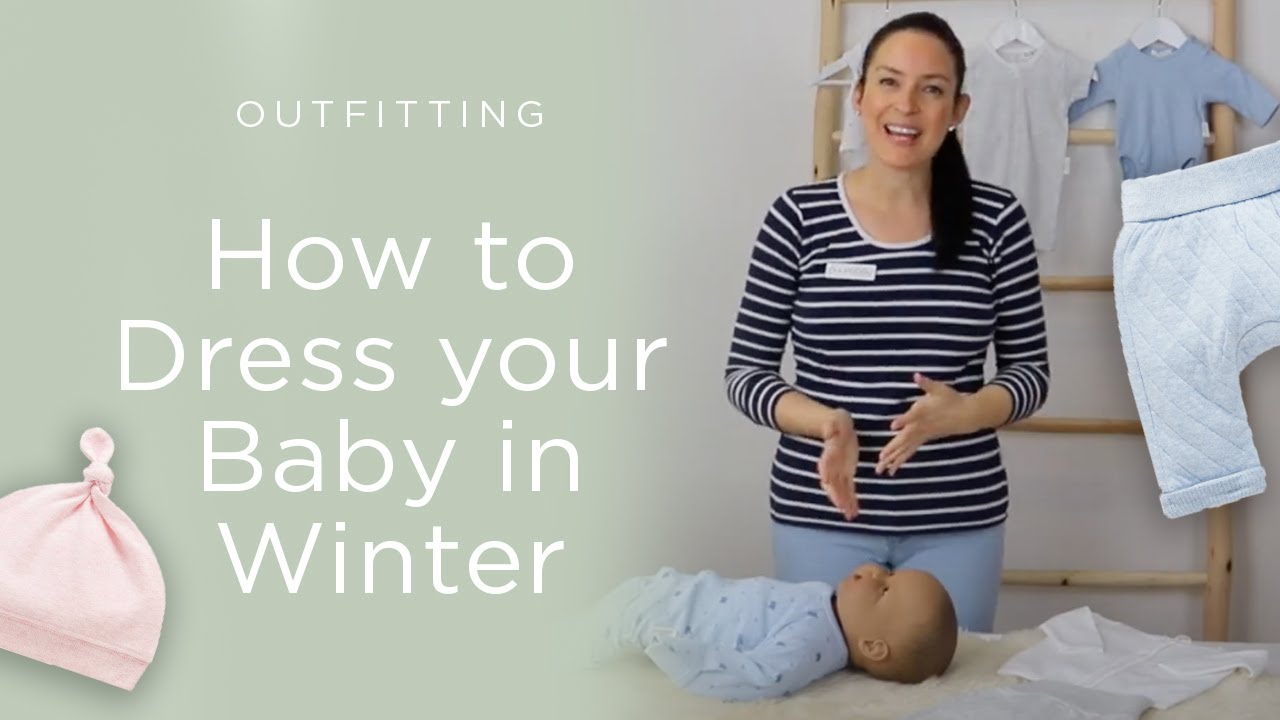Babies typically fit into newborn clothes for 0 to 3 months. Some may outgrow them sooner, depending on their size.
Newborn clothes are designed for babies weighing up to 8 pounds. Most babies grow quickly in their first few months. This rapid growth can make it hard to predict how long they will wear these clothes. Some babies may fit into newborn sizes for a few weeks, while others might only wear them for days.
Parents should check the baby’s weight and length regularly. It’s wise to have a few different sizes on hand. This ensures your baby is comfortable and well-dressed. Choose soft fabrics that are gentle on their skin. Always prioritize comfort and ease of dressing for your little one.
Table of Contents
Introduction To Baby Clothing Sizes
Understanding baby clothing sizes is important for parents. Newborn clothes are designed for babies weighing up to 10 pounds. Most babies outgrow these sizes within the first month. Factors like birth weight, growth rate, and body shape affect how long clothes fit.
Proper fit ensures comfort and safety. Clothes that are too tight can cause irritation. Oversized clothes may lead to tripping or falling. Choosing the right size helps babies move freely. Parents should regularly check clothing fit as babies grow.
| Factor | Impact on Size |
|---|---|
| Birth Weight | Heavier babies may outgrow clothes faster. |
| Growth Rate | Some babies grow quickly in their early months. |
| Body Shape | Different shapes may require different sizes. |

Credit: www.facebook.com
The Newborn Phase: A Brief Overview
The newborn phase lasts about four to six weeks. Babies grow quickly during this time. Newborn clothes are designed for infants weighing up to 8 pounds and measuring up to 21.5 inches. Many babies outgrow these sizes within a month.
Typical growth patterns show that weight gain is around 5 to 7 ounces a week. By the end of the first month, some babies weigh 10 pounds or more. Length also increases, with many infants reaching 22 inches by this time.
| Age | Weight Range | Length Range |
|---|---|---|
| 0-1 Month | Up to 8 lbs | Up to 21.5 inches |
| 1 Month | 10 lbs+ | 22 inches+ |
Determining Your Baby’s Clothing Size
Newborn clothes fit babies based on their weight and length. Most newborns wear size 0-3 months. A typical newborn weighs between 5.5 to 8.5 pounds and measures 18 to 21 inches long.
Each brand has different sizing standards. Some brands may run larger or smaller. Always check the size chart before buying. Fit can also depend on how quickly your baby grows.
Consider buying a few larger items for later. Babies grow fast and may outgrow newborn sizes quickly. Choosing the right size helps keep your baby comfortable.
Common Lifespan Of Newborn Attire
Newborn clothes usually fit babies for about 2 to 4 weeks. This can vary with each baby. Most newborns grow quickly. Some might need new clothes sooner.
Watch for these signs that show a baby has outgrown their newborn clothes:
- Clothes feel tight or restrictive.
- Baby’s hands or feet poke out of the outfit.
- Diaper changes become difficult due to snug fits.
- Baby seems uncomfortable or fussy in their clothes.
Parents should check clothing size often. Babies grow fast, so upsizing may be needed frequently.
Maximizing Wearability Of Newborn Clothes
Choosing adjustable outfits helps babies wear clothes longer. Look for clothes with stretchy waistbands and snap closures. These features allow easy adjustments as babies grow. Consider onesies that can expand or have extra snaps. They ensure a snug fit and comfort.
Using layering techniques is also beneficial. Start with a basic onesie as a base layer. Add a soft sweater or jacket for warmth. This method allows for quick changes. It also gives flexibility for different weather conditions. Layering helps in maximizing the use of newborn clothes.
When To Transition To Larger Sizes
Monitoring your baby’s growth is very important. Babies grow quickly, especially in the first months. Newborn clothes usually fit for about 0 to 3 months. After that, sizes may need to change.
Check your baby’s weight and height regularly. This helps determine when to switch sizes. If clothes feel tight or uncomfortable, it’s time for a change.
Planning ahead for size changes can save time and money. Buy a few larger sizes in advance. This ensures you have clothes ready as your baby grows.
Consider the growth spurt stages. Babies might need new clothes every few weeks. Keep an eye on their comfort and fit.
Storage Tips For Outgrown Newborn Clothes
To keep outgrown newborn clothes in great shape, follow these tips. Clean the clothes before storing them. Use a gentle detergent to avoid any damage. Make sure they are completely dry to prevent mold.
Store clothes in plastic bins or vacuum-sealed bags. This protects them from dust and pests. Label each container for easy access later. Keep the bins in a cool, dry place to avoid moisture.
For clothes that no longer fit, consider donation or recycling. Local charities often accept baby clothes. Some organizations provide clothes to families in need. Recycling programs can turn fabric into new items.
Sharing with friends or family is another option. This keeps the clothes in use and helps others. Selling online is also a great way to pass on items.
Shopping For Newborn Clothes
Shopping for newborn clothes can be fun and exciting. Quality matters a lot. Soft fabrics are best for a baby’s sensitive skin. Choose clothes that are easy to put on and take off. Avoid outfits with many buttons or zippers. These can be hard to manage.
It’s wise to balance quantity and quality. Buying too many clothes may lead to waste. Babies grow quickly, so size up when necessary. Focus on the essentials that will fit well.
| Essential Items | Quantity |
|---|---|
| Onesies | 5-7 |
| Pajamas | 3-5 |
| Sleep sacks | 2-3 |
| Hats | 2 |
| Socks | 4-6 pairs |
Cost-effective Strategies For Newborn Attire
Investing in multipurpose garments is wise for newborns. Choose clothes that can serve many purposes. For example, a romper can be used for playtime and sleep. Look for items that are easy to put on and take off.
Finding deals and discounts helps save money. Check local stores and online shops for sales. Sign up for newsletters to get exclusive offers. Consider buying second-hand clothes in good condition. Friends and family may also have clothes to share.
Planning ahead is key. Buy clothes in larger sizes that fit for longer. Opt for neutral colors to mix and match outfits easily. This strategy keeps costs low while ensuring your baby looks great.
The Role Of Seasonality In Baby Clothing
Seasonal changes can affect how long babies wear newborn clothes. In winter, thicker fabrics help keep babies warm. For summer, lighter materials are best to prevent overheating.
Adjusting the baby’s wardrobe for weather is important. Parents should check the temperature regularly. This helps ensure the baby is comfortable in any season.
Babies grow quickly, so size may not fit for long. Seasonal growth can change how long clothes are useful. Some babies may need larger sizes as seasons change.
Monitor the baby’s growth closely. Always be ready to switch to new clothing as needed. This keeps the baby happy and comfortable throughout the year.
Navigating Growth Spurts
Babies grow quickly. They often outgrow newborn clothes within a few weeks. Growth spurts can happen suddenly. Keep an eye on your baby’s weight and length.
Anticipating sudden size changes is important. Choose clothes with some extra room. This way, they can last longer. Look for items with adjustable features like stretchy waistbands.
Flexible wardrobe planning helps save money. Buy a few newborn outfits but also consider sizes up to 3 months. This ensures your baby has clothes to wear as they grow.
Consider using clothing swaps with friends. This way, you can refresh your baby’s wardrobe without spending much. Remember, babies grow fast, so plan wisely.
The Impact Of Laundry Habits On Clothing Lifespan
The lifespan of baby clothes often depends on laundry habits. Washing clothes too often can cause wear. Using the right settings helps maintain fabric quality. Cold water washes protect colors and textures better.
Choosing durable fabrics is key for lasting clothing. Look for materials like cotton or bamboo. These fabrics are soft and strong. They can handle frequent washing without falling apart.
Care instructions play a big role too. Always follow the manufacturer’s guidelines. Avoid bleach, as it can damage fabrics. Air drying is gentler than using a dryer.
Psychological Aspects Of Baby Clothing
Babies grow quickly, making newborn clothes a temporary fit. Parents often develop an emotional attachment to these tiny outfits. They represent the early days of parenthood. Each piece can remind them of special moments. Many parents find it hard to part with these clothes.
Rapid growth can be challenging for families. Babies might outgrow clothes within weeks. Parents should plan ahead for larger sizes. Donating or storing outfits can help cope with this change. Keeping a few favorite items can ease the emotional burden.
Sharing stories about the outfits also helps. It creates a connection between the past and present. Embracing this journey makes the transition smoother for everyone.

Credit: qookeee.com
Conclusion: Embracing The Growth Journey
Babies grow quickly. Newborn clothes often fit for only a few weeks. Most infants outgrow them by two months. Some may wear them for a bit longer, depending on their size.
Every baby’s growth journey is unique. Celebrating milestones is important. Each new size brings excitement and joy.
As babies grow, preparing for the next stage is essential. Investing in larger clothes helps keep them comfortable. Choosing soft, flexible fabrics is a great idea.
Parents should keep track of their baby’s growth. Regularly check the fit of clothing. This ensures babies stay safe and happy.

Credit: www.pinterest.com
Frequently Asked Questions
How Quickly Do Babies Outgrow Newborn Clothes?
Babies typically outgrow newborn clothes within 2 to 3 months after birth.
What Size Comes After Newborn Clothes?
The next size after newborn is usually 0-3 months.
Do All Brands Fit Differently?
Yes, sizing can vary by brand, so always check measurements.
How Do I Know If Clothes Fit My Baby?
Look for snugness around the neck, sleeves, and waist without being too tight.
Can I Use Newborn Clothes For Premature Babies?
Newborn clothes may fit some premature babies, but check size and adjust as needed.
Conclusion
Babies grow quickly, so newborn clothes won’t fit for long. Most infants wear these outfits for about one to three months. Choose clothes that are easy to put on and take off. Always check the size and comfort. Enjoy dressing your baby in cute outfits while they still fit!







